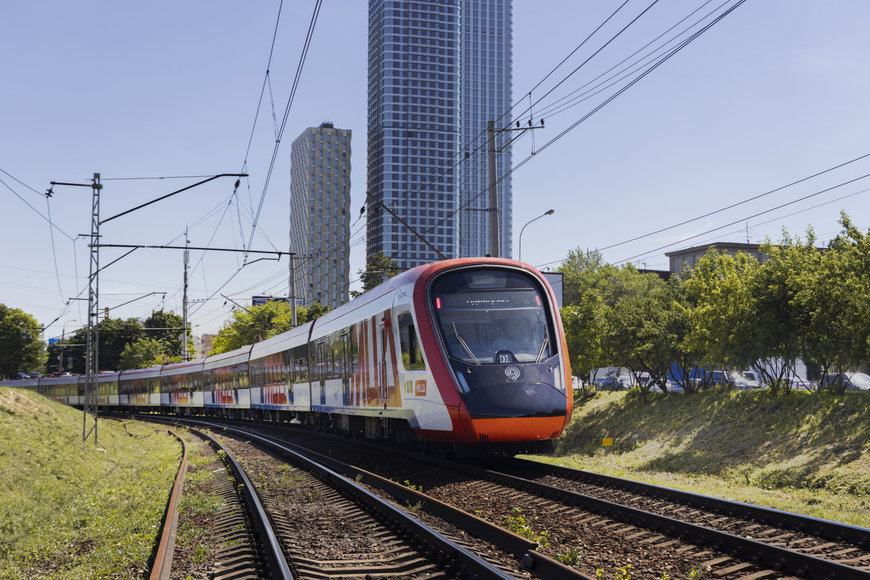railway-international.com
03
'21
Written on Modified on
The launch of the third above-ground metro line will influence the ecology in Moscow
The environmental situation in Moscow has markedly improved over the past few years. In many respects, this is due to the transport infrastructure: more and more Muscovites are driving through the city by public transport, as well as actively using bicycles and electric cars. However, rail transport is the most eco-friendly, so today all the world mega-cities are focused on its development.

Transport accounts for 22% of global greenhouse gas emissions each year. Public transport is being promoted to reduce its global burden.
«One of the priorities set by the mayor of Moscow is to implement attractive tariffs on the prospective diameters and to create a convenient network of interchanges, in order, to interest current drivers in using the MCD. According to our projections, in the first year of the D3 operation more than 6.6 million drivers who chose it instead of a private car will be transported by the MCD. As a result, the number of harmful substances emitted into the atmosphere will be reduced by 36,000 tons per year. This means that the environmental situation in the capital will change for the better and that the roads in Moscow will be unloaded», – noted Maksim Liksutov, Deputy Mayor of Moscow for Transport.
Global warming is a major factor in climate change. Since the industrial revolution in 1800s, humanity has been emitting billions of tons of heat-retaining greenhouse gases into the atmosphere, causing the planet to be heated by more than 1°C comparing to the pre-industrial levels. This has led to the frequent extreme weather conditions such as hurricanes, sea-level rise, coral reef destruction due to ocean acidification and air pollution.
The capital of Denmark has one of the most extensive cycling networks in the world, with 8 cycling superhighways spanning 167 km. Copenhagen will offer a total of 45 bicycle routes over 750 km by 2045. 62% of Copenhagen residents commute by bicycle. According to Sidsel Birk Hjuler, head of the cycle superhighways office in the Danish capital region: «Infrastructure is the key to our success. We give space for people to bike. It is visible to the bike commuters that there is a space for them, giving them a status».

Curitiba – the southern Brazilian city, has one of the largest and cheapest bus systems in the world. It means that its residents spend on trips about 10% of their income, that is far below the national average. Long time ago Curitiba has introduced BRT system, with buses running very frequently, sometimes every 90 seconds. As a result, almost 70% of the city residents using public transport to get to work.
The extension of the transport system network, the construction of new stations near the residential and working area, these are requests of passengers. The passenger traffic on the MCC and the MCD is rapidly increasing and even exceeded the pre-pandemic rate. Since early 2021, the MCC has transported more than 100 million passengers.
Moscow has the largest transport projects implementation in the world: the Moscow Central Diameters and the Big Circle Line. They are one of the foundations of the capital city transport framework. The Moscow Central Diameters is an off-street railway transport that is analogue to the Crossrail in London and the RER in Paris. The launch of the D1 and D2 have improved accessibility for more than 4 million people living in 45 Moscow districts and 6 Moscow regional cities. The MCD consists of 60 stations with 21 interchanges. Paying for travelling becomes simpler. Passengers used to buy a separate ticket, and now there is a single payment system for all modes of public transport. The headway between trains does not exceed 7 minutes at peak hours. The launch of the future D3 is planned in 2023. It will connect the two Moscow districts – Zelenograd and Ramenskaya. The new Diameter will include 43 stations and its length will be 82 km. The D4 is scheduled to be launched in 2023 and D5 in 2025. Completion of the Big Circle Line is planned for 2022. The total length will be 70 km, it will include 31 stations and it will also provide interchanges to all radial metro lines, MCC and MCD.
www.mcd.mosmetro.ru

